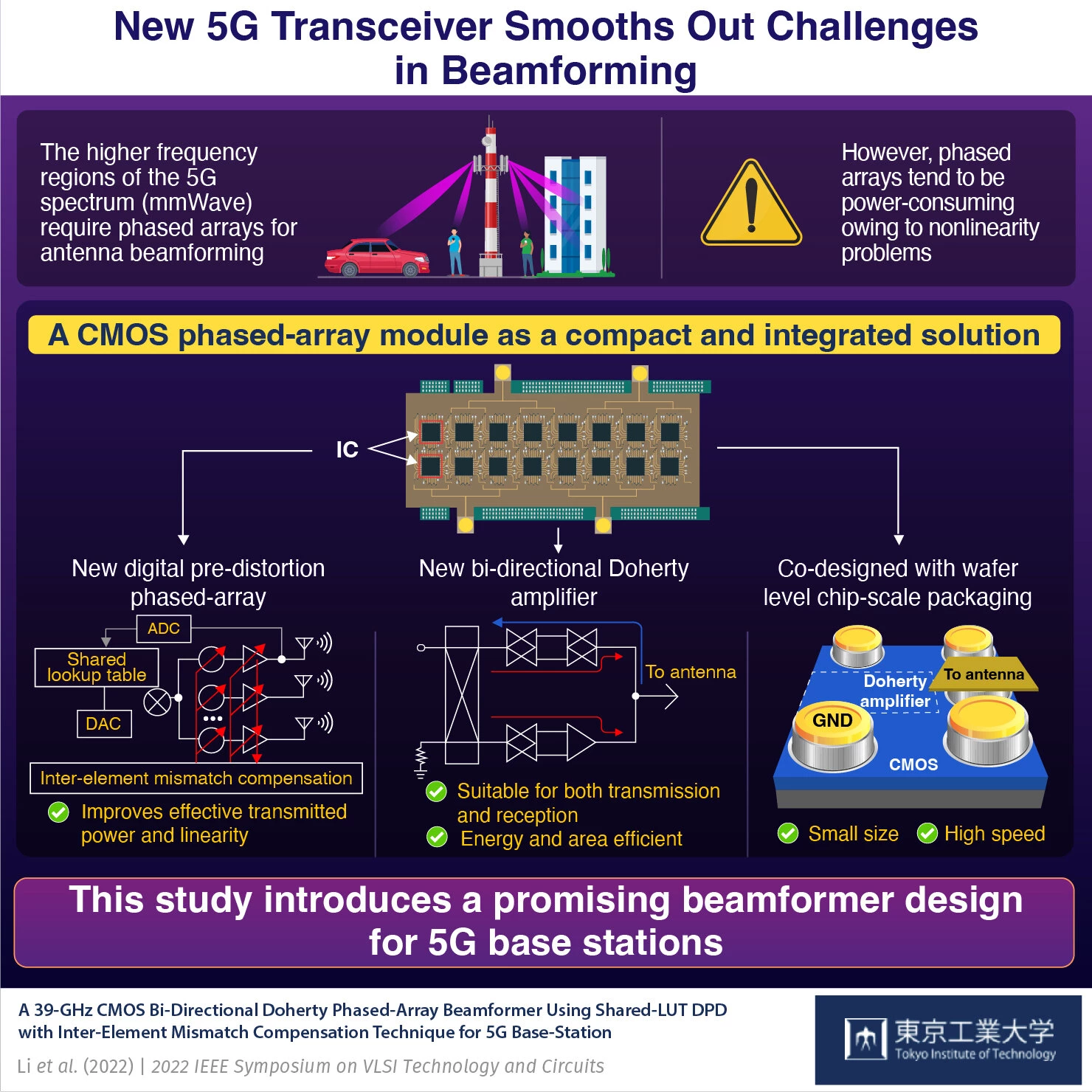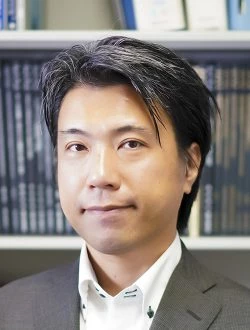New transceiver that can access the higher frequency bands utilized by 5G networks
Increased use of videoconferencing applications led to a rise in worker fatigue, study finds / Developing optically active polymers for next-generation television and computer displays
These frequency bands range from 37 GHz to 43.5 GHz depending on the nation, and they include the New Radio (NR) 39 GHz band. The NR band offers significant performance advantages over other lower frequency bands currently used by 5G networks. It enables ultra-low communication latency, data rates greater than 10 Gb/s, and a massive capacity to accommodate numerous users.
These achievements, however, come at a cost. As high-frequency signals travel through space, they experience rapid attenuation. Therefore, it is essential that the transmitted power be focused in a narrow beam that is directed directly at the receiver. Phased-array beamformers, transmission devices made up of a variety of meticulously phase-controlled antennas, can theoretically be used to accomplish this. However, power amplifiers' efficiency is reduced when operating at high frequencies in the NR band because they frequently experience nonlinearity problems that skew the transmitted signal.

New transceiver that can access the higher frequency bands utilized by 5G networks.
To address these issues, a group of researchers led by Professor Kenichi Okada of Tokyo Institute of Technology (Tokyo Tech) in Japan recently published a new study in which they developed a novel phased-array beamformer for 5G base stations. With a few modifications, their design incorporates the Doherty amplifier and digital predistortion (DPD), two well-known techniques, into a mmWave phased-array transceiver. The scientists will present their findings at the IEEE Symposium on VLSI Technology and Circuits in 2022.
Due to its good power efficiency and suitability for signals with a high peak-to-average ratio, the Doherty amplifier, developed in 1936, has seen a resurgence in modern telecommunication devices (such as 5G signals). The Tokyo Tech team created a bi-directional amplifier by modifying the traditional Doherty amplifier design. This means that the same circuit can amplify a signal that is being transmitted as well as a signal that is being received with minimal noise. Amplification, which is essential for both transmission and reception, was successfully performed.
"Our proposed bidirectional implementation for the amplifier is very area-efficient. Additionally, thanks to its co-design with a wafer-level chip-scale packaging technology, it enables low insertion loss. This means that less power is lost as the signal traverses the amplifier," explains Professor Okada.

Professor Kenichi Okada of Tokyo Institute of Technology.
Despite all of its benefits, the Doherty amplifier can make phased-array antenna element mismatches that cause nonlinearity issues worse. The group used two approaches to solve this issue. In order to effectively cancel out the distortion introduced by the amplifier, they first used the DPD technique, which entails distorting the signal before transmission. Their use of a shared look-up table (LUT) for all antennas, in contrast to conventional DPD approaches, reduced the circuit's complexity. Second, they enhanced the phased array's overall linearity by adding inter-element mismatch compensation capabilities.
"We compared the proposed device with other state-of-the-art 5G phased-array transceivers and found that, by compensating the inter-element mismatches in the shared-LUT DPD module, ours demonstrate a lower adjacent channel leakage and transmission error," remarks Professor Okada. "Hopefully, the device and techniques described in this study will let us all reap the benefits of 5G NR sooner!"
Reference: Tokyo Institute of Technology. "Introducing a transceiver that can tap into the higher frequency bands of 5G networks."
End of content
Không có tin nào tiếp theo
